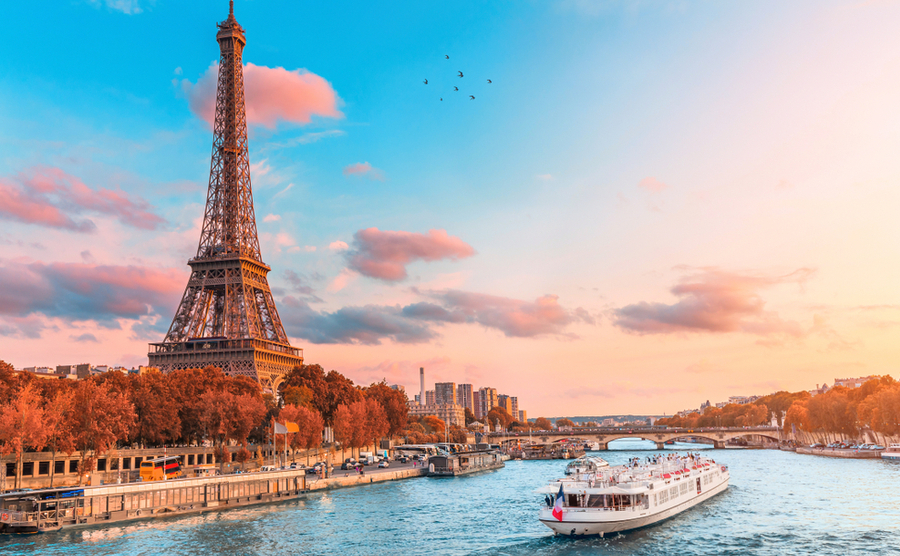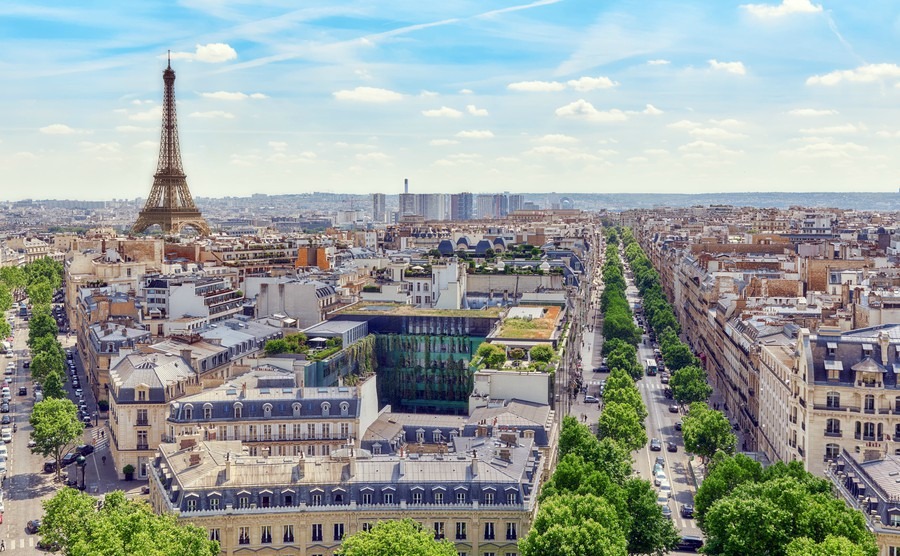Buying property in Île-de-France

Île-de-France is the region including Paris, but stretches way beyond, especially south, as far as 100 kilometres. Literally translated as “island of France”, it is also commonly known as the Paris region.
It contains eight departments and covers an area four times larger than that inside London’s M25. It’s the most populous region in all of France too, with 12 million people.
Due to its excellent transport links and proximity to the capital, property in Île-de-France is extremely popular. But is it good for international buyers?
Why buy a home in Île-de-France?
As the region is home to the capital of France, Île-de-France has a lot to offer. Paris itself, basking in the afterglow of the 2024 Olympics is, of course, home to world-class museums, the Louvre and Musée d’Orsay, historic landmarks, Eiffel Tower and Notre-Dame Cathedral.
Each neighbourhood (arrondissement) has its own personality. From those renowned for fashion and shopping (around the Champs-Elysée), to the bohemian vibes of (Montmartre) and the modern appeal of the Marais, there’s an arrondissement for every taste. For lifestyle, there is nothing to beat Paris: the global centre of art, fashion, cuisine, sport and much else.
The suburbs and satellite towns offer the same benefits but just a train ride away. Then again many are welcoming communities in themselves. Towns such as Fontainebleau, 25 kilometres south of Paris, or Auvers-sur-Oise to the north, long associated with famous artists including Van Gogh.
What can you get for your money in Île-de-France?
Will there be an Olympic boost? The city is certainly on the upswing and that is likely to have a halo effect for the rest of Île-de-France.
Unlike elsewhere in France, houses and villas make up only 7% of the property market in Île-de-France. The rest are apartments.
Île-de-France has some of the highest property prices in France. Paris has the highest prices, while suburban departments, like Seine-et-Marne and Essonne, are typically more affordable.
In Paris, properties in the central arrondissements are typically rather expensive, but if it’s luxury you’re after, there are a range of apartments and penthouses available that start at around €1 million.
If you’re looking for something more affordable, head just outside the affluent 6th, 7th and 16th arrondissements to find a smart pied-à-terre – small urban property – for an attractive price; one which would offer an excellent rental return if you so choose and is likely to only increase in value.
The average price per square metre for apartments in Île-de-France is €10,090, according to the latest Notaires data. Older houses and villas (non-new builds) have an average price of €354,400.
Residential homes soared to record highs in 2022 but have since fallen. However, it’s worth noting that there is significant investment potential in Île-de-France. The Greater Paris real estate sector offers rental yields of 4% – 7%, an appealing statistic for investors.
If you are interested in letting your property in Île-de-France, it’s important to check if there are any restrictions. In recent years, the government has cracked down on this, especially in popular areas of tourism.

Beautiful panoramic view of Paris from the roof of the Triumphal Arch. View of the Eiffel Tower.
Steps to buying property in Île-de-France
- Define your criteria: Determine what you’re looking for in terms of property type, location, budget and must-have features.
- Research: Use online resources, visit local real estate agencies and explore the area to find properties that match your criteria. Book your place at the Your Overseas Home Virtual Event.
- Speak to a currency expert: Moving exchange rates are a risk in international property purchases, so discuss managing that risk with a forward contract that fixes your exchange rate.
- Legal considerations: Familiarise yourself with the French property buying process, including the role of the Notaire, who handles the legal aspects of the sale. Contact an independent lawyer at this stage.
- Financing: Investigate mortgage options if required. French banks offer loans to non-residents, but it’s advisable to compare rates and terms.
- Book your viewing/scouting trip: Download the guide, contact estate agents and book your tickets.
- Making an offer: Once you find a property you like, you can make an offer. If accepted, you’ll sign a preliminary contract (compromis de vente or a promesse de vente) and pay a deposit.
- Completion: The final sale is completed when the acte de vente is signed at the notaire’s office, and the balance of the purchase price is paid.
Costs of buying property in Île-de-France
When buying property in Île-de-France or wider France, the buyer is responsible for notaire fees, which average 7-8% of the property price (or 2-3% for new homes) and will have to also consider estate agent fees (although often included in the property price) and homeowner taxes.
You might also like:

